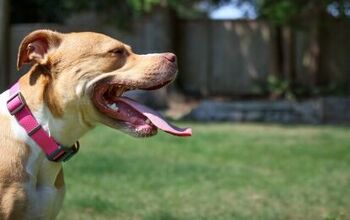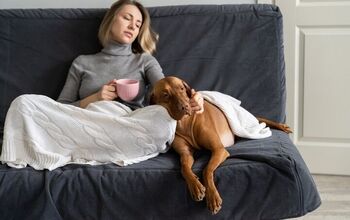Black and Tan Coonhound


About Black and Tan Coonhound
The Black and Tan Coonhound is a true hound breed in every sense of its name. Not only does it look the part, but it’s got a nose on it that will track down whatever it is hunting – but the Black and Tan Coonhound really loves going after raccoons and opossums. Known to bay and howl until the hunter arrives, this dog is mellow, calm, determined and hardworking.
A great pet for families and lovers of the outdoors, the Black and Tan Coonhound may be the perfect fit for your household. Read on to learn more about this fascinating breed.
A great pet for families and lovers of the outdoors, the Black and Tan Coonhound may be the perfect fit for your household.
Originally bred in America in the early 1900s, the Black and Tan Coonhound is actually made up of several different breeds. Black and Tan Coonhounds were originally bred as scent hunters that were used to tree small animals (mostly raccoons). Once it trapped its prey, the Black and Tan Coonhound would bay at the base of the tree, which would alert the hunter to its location.
Black and Tan Coonhounds can also be used to hunt other types of game, as this breed excels at any type of scent hunting. Along with its keen scenting abilities, this breed can travel at a fast pace and are suited to night hunting. Built for endurance, the Black and Tan Coonhound are able to travel across rugged, mountainous regions. Although not a common dog, the Black and Tan Coonhound is popular in many of the southern areas of the United States.
Pedigree
The Black and Tan Coonhound is believed to have descended from the Talbot Hound, which originated in 11th century England, and the Bloodhound. In America, the Black and Tan Coonhound was bred from Foxhounds, giving it a treeing instinct as well as its black and tan color pattern.
The Black and Tan Wolfhound was recognized by the AKC in 1945.
Your Black and Tan Coonhound will have quite an appetite, so be sure to feed your dog a quality dog food with meat listed as the first ingredient. As well, any diet should have the proper balance of protein, carbs, fats, fiber, vitamins and minerals, whether it’s store-bought or a homemade food. And make you don’t overfeed your Black and Tan Coonhound, as it can lead to serious health issues.
Known to bay and howl until the hunter arrives, this dog is mellow, calm, determined and hardworking.
If you’re using your Black and Tan Coonhound to hunt, it will require specialized training in scent discrimination. There are professional hunting and gun dog trainers that can provide this type of training for both you and your dog.
When it comes to obedience training, you’ll need to employ consistent, positive training methods and lots of repetition (Tip: Most coonhounds are food oriented and will do almost anything for a treat). Black and Tan Coonhounds are smart but can be easily distracted. You may get frustrated at its ability to focus on a scent, so work with the dog rather than against its natural tendencies. Like any kind of larger dog, start training and socialization early.
Both male and female Black and Tan Coonhounds weight 50 to 75 pounds.
Temperament / Behavior
You’ll find the Black and Tan Coonhound to be calm, relaxed and loving. It likes to hang out with people, other dogs and even household pets. To tap into this dog’s natural calm disposition, you will need to start socialization early in order to prevent problems with dog aggression or chasing of other animals. The Black and Tan Coonhound will be a good watchdog but it is too friendly to be a guard dog. All it takes is one introduction, and then that person is a Black and Tan Coonhound’s friend, greeted with a happy bark and a wagging tail.
This breed can be boisterous in play, so these dogs are better suited to families with older children. As well, this dog needs a large, fenced space where it can self-exercise during the day. Don’t leave your Black and Tan Coonhound in a confined space or kennel – it needs to have both routine human companionship and exercise to be a happy and well-adjusted dog.
The Black and Tan Coonhound has the same general health issues of any large breed. One of the biggest concerns is hip dysplasia, but this can be tested before dogs are bred to ensure this condition is not passed on to its puppies. Another concern is bloat, which is a potentially fatal digestive condition. You can prevent bloat by providing two or three smaller meals per day, limiting exercise immediately after eating and ensuring that the dog does not eat a large amount of dry food and then drink immediately after. Providing fresh water throughout the day or pre-soaking food can prevent bloat as well.
Black and Tan Coonhounds have a life expectancy of 10 to 12 years.
Your Black and Tan Coonhound needs daily exercise. A large fenced-in yard is ideal for self- exercise when left on its own. This is a social dog, so it will do best if paired with another fairly active dog.
Keep the Black and Tan Coonhound on a leash whenever it is out of the yard. Once this dog finds a scent, it will be off and running, and won’t listen to your commands to return. Sometimes the Black and Tan Coonhound will be so intent on tracking that it will walk or run into traffic with no attention to vehicles.
Once fully trained, the Black and Tan Coonhound can be taught to work off-leash in quiet areas, but this takes time and patience and is not recommended in high traffic locations.
You’ll find the Black and Tan Coonhound to be calm, relaxed and loving.
The American Kennel Club says this about the breed: “One of the few All-American breeds, the Black and Tan Coonhound is a persistent, determined, honest hunter who will stay on track no matter the terrain or conditions. His name developed from his color and purpose – his coat is coal black with tan markings, and he is used to trail and tree raccoon.”
The Black and Tan Coonhound has a short, coarse and dense coat that is black with tan markings on the muzzle, eyebrows, chest, and lower legs and on the tail and underside. Groom once a week to remove any dead hair.
Larger breeds usually grow fast, so in no time, your puppy won’t be small for long. As with any larger breed dog, you’ll need to start training your Black and Tan Coonhound as early as possible.

Amy Tokic, Editor of PetGuide.com, is a passionate animal lover and proud pet parent of Oscar, a Shih Tzu/Chihuahua cross, and Zed, a Japanese Chin. Her love of animals began in kindergarten, when she brought her stuffed dog Snoopy into class with her every day. Now, she writes about her adventures in pet ownership and tirelessly researches products, news and health related issues she can share with other animal enthusiasts. In her free time, Amy loves perusing used book and record stores, obsessing over the latest pet products available and chasing squirrels with wild abandon (a habit attributed to spending too much time with her pooches).
More by Amy Tokic

























